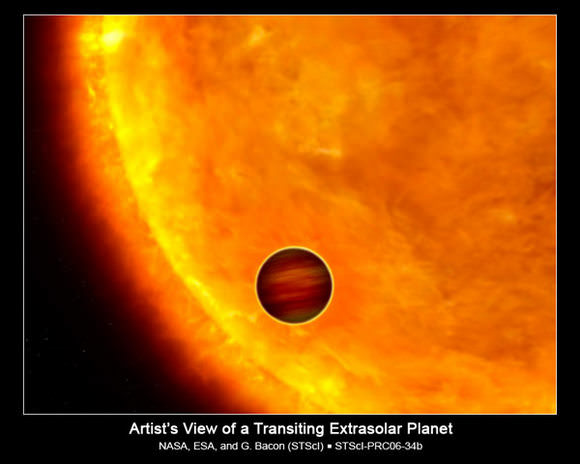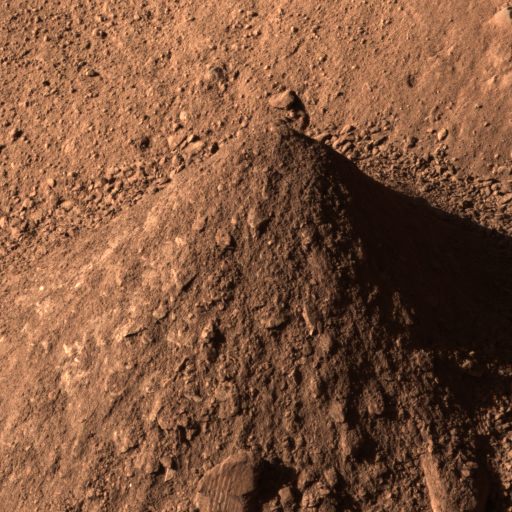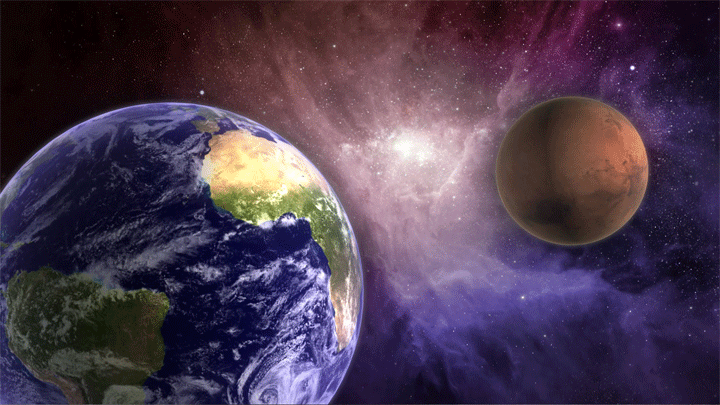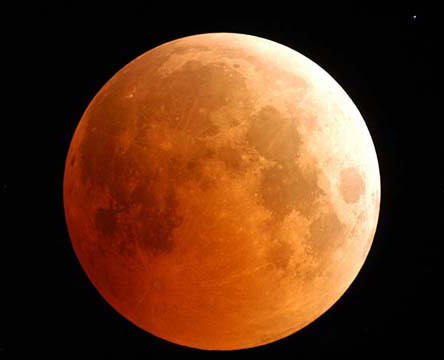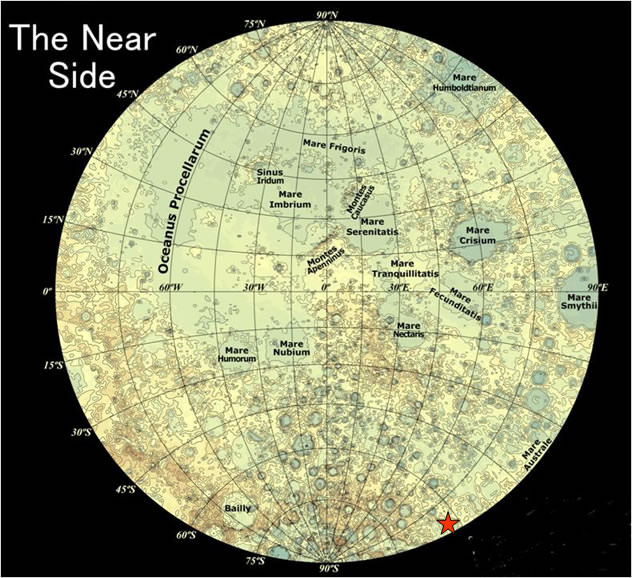Did you get a chance to watch Galactic TV this morning? Although our skies didn’t last long before the clouds took over, we did get a chance to get a little Messier! This time it was object 107… and we saved the video for you. Come on inside for a look…. Continue reading “IYA Live Telescope Today: Messier 107”
Add Heat, Then Tectonics: Narrowing the Hunt for Life in Space
In order to support life, an exoplanet should simply hang out where heat from its star is just right for liquid water. Right?
Not necessarily. New research is suggesting that in order to support life, such a planet might also need plate tectonics, and those are triggered in a narrower band of distance from the parent star.
Rory Barnes, a University of Washington astronomer, is lead author of a paper to be published by The Astrophysical Journal Letters that uses new calculations from computer modeling to define a “tidal habitable zone.”
Besides liquid water, scientists think plate tectonics are needed to pull excess carbon from its atmosphere and confine it in rocks, to prevent runaway greenhouse warming. Tectonics, or the movement of the plates that make up a planet’s surface, typically is driven by radioactive decay in the planet’s core, but a star’s gravity can cause tides in the planet, which creates more energy to drive plate tectonics.
“If you have plate tectonics, then you can have long-term climate stability, which we think is a prerequisite for life,” Barnes said.
The tectonic forces cannot be so severe that geologic events quickly repave a planet’s surface and destroy life that might have gotten a foothold, he said. The planet must be at a distance where tugging from the star’s gravitational field generates tectonics without setting off extreme volcanic activity that resurfaces the planet in too short a time for life to prosper.
“Overall, the effect of this work is to reduce the number of habitable environments in the universe, or at least what we have thought of as habitable environments,” Barnes said. “The best places to look for habitability are where this new definition and the old definition overlap.”
The new calculations have implications for planets previously considered too small for habitability. An example is Mars, which used to experience tectonics but that activity ceased as heat from the planet’s decaying inner core dissipated.
But as planets get closer to their suns, the gravitational pull gets stronger, tidal forces increase and more energy is released. If Mars were to move closer to the sun, the sun’s tidal tugs could possibly restart the tectonics, releasing gases from the core to provide more atmosphere. If Mars harbors liquid water, at that point it could be habitable for life as we know it.
Various moons of Jupiter have long been considered as potentially harboring life. But one of them, Io, has so much volcanic activity, the result of tidal forces from Jupiter, that it is not regarded as a good candidate. Tectonic activity remakes Io’s surface in less than 1 million years.
“If that were to happen on Earth, it would be hard to imagine how life would develop,” Barnes said.
A potential Earth-like planet, but eight times more massive, called Gliese 581d was discovered in 2007 about 20 light years away in the constellation Libra. At first it was thought the planet was too far from its sun, Gliese 581, to have liquid water, but recent observations have determined the orbit is within the habitable zone for liquid water. However, the planet is outside the habitable zone for its sun’s tidal forces, which the authors believe drastically limits the possibility of life.
“Our model predicts that tides may contribute only one-quarter of the heating required to make the planet habitable, so a lot of heat from decay of radioactive isotopes may be required to make up the difference,” Jackson said.
Barnes added, “The bottom line is that tidal forcing is an important factor that we are going to have to consider when looking for habitable planets.”
Source: The University of Washington via Eurekalert. The paper is available here.
Planet-Forming Disk Discovered Orbiting Binary System

[/caption]
Science fiction is lousy with examples of planets that orbit a system of two suns. Tatooine, in the Star Wars saga, is endowed with a pair of suns to light up the sky, as is the planet Magrathea in The Hitchhiker’s Guide to the Galaxy. It would indeed be quite a spectacle to wake up to more than one Sun every day for us who have only one. This sight may entirely be possible to view around the young binary star system V4046 Sagittarii, as new images from the Smithsonian’s Submillimeter Array (SMA) have confirmed the existence of a molecular cloud – which could harbor, or later produce planets – orbiting the twin stars. This is the first time that evidence of planetary formation around a binary system of stars has been uncovered.
“We believe that V4046 Sagittarii provides one of the clearest examples yet discovered of a Keplerian, planet-forming disk orbiting a young star system,” said David Wilner of the Harvard-Smithsonian Center for Astrophysics in a press release issued today at the American Astronomical Society (AAS) meeting in Pasadena, Calif.
The disk has traces of carbon monoxide and hydrogen cyanide, gases that are telltale signs of planetary formation. It also lies between 30 -300 Astronomical Units from the central binary star system, a distance at which it is likely that our own giant planets Jupiter and Saturn formed, as well as the Kuiper belt objects. The two stars that make up the V4046 Sagittarii binary system are both approximately the mass of the Sun, and separated by a distance of 5 solar diameters.
Joel Kastner of the Rochester (NY) Institute of Technology, the lead scientist on the study, said in the press release“It’s a case of seeing is believing….We had the first evidence for this rotating disk in radio telescope observations of V4046 Sagittarii that we made last summer. But at that point, all we had were molecular spectra, and there are different ways to interpret the spectra. Once we saw the image data from the SMA, there was no doubt that we have a rotating disk here.”

The team of astronomers from the Harvard Smithsonian Center for Astrophysics and the Rochester Institute of Technology used the 30-meter radio telescope operated by the Institut de Radio Astronomie Millimetrique (IRAM) to pin down the the composition of the cloud, then used images from the Submillimeter Array to further confirm the finding. Both telescopes are sensitive to light in the submillimeter spectrum, which emanates from cold interstellar material such as gas and dust.
This new finding bodes well for the possibility that many other binary star systems harbor planets, and gives astronomers a new place to search for planets outside of our own solar system. Even better, V4046 Sagittarii is only 240 light-years away from our solar system, meaning that there’s a good chance that astronomers can image any planets that have already formed in the disk.
Source: AAS, Harvard-Smithsonian Center for Astrophysics
Where In The Universe #57
Are you ready for another Where In The Universe Challenge? Take a look and see if you can name where in the Universe this image is from. Give yourself extra points if you can name the spacecraft responsible for the image. As usual, we’ll provide the image today, but won’t reveal the answer until tomorrow. This gives you a chance to mull over the image and provide your answer/guess in the comment section. Please, no links or extensive explanations of what you think this is — give everyone the chance to guess.
UPDATE: The answer has now been posted below. Don’t peek before you guess!
It was fun to have an image that (finally!) not everyone knew at first glance. I was feeling a little nostalgic and missing the Phoenix lander, so I chose an image from that mission — which was going on and going strong a year ago.
This is a pile of Mars soil that the Phoenix lander excavated with its scoop. This pile was called “Caterpillar” and the image was taken on August 24, 2008.
The conical pile is about 10 centimeters (4 inches) tall, and was taken from several trenches that the lander dug. For more about the image, see the Phoenix gallery.
Wild Little Mercury to Cause Interplanetary Smashup? Maybe.
[/caption]
The chaotic evolution of the planetary orbits in the Solar System could cause a close approach or even a collision within the next 5 billion years, according to a paper in this week’s issue of Nature.
The odds are small, but that didn’t stop NASA from releasing a series of really fun “what-if” images (below) …
Mercury is the wild card, according to co-authors Jacques Laskar and Mickael Gastineau of the Paris Observatory. If its orbit elongates, our puniest neighbor could throw the whole block in peril.
Because its orbit resonates with that of Jupiter, Mercury could become the planet gone wild (eccentric in astronomy speak), colliding with Venus.
The chance is slim, the authors point out — around 1 percent. But the finding — revealed through thousands of computer simulations — was a surpise.
“More surprisingly, in one of these high-eccentricity solutions, a subsequent decrease in Mercury’s eccentricity induces a transfer of angular momentum from the giant planets that destabilizes all the terrestrial planets,” the authors write, “with possible collisions of Mercury, Mars or Venus with the Earth.”
Gregory Laughlin, an astronomer at the University of California Santa Cruz who wrote an accompanying editorial about the new paper, couched it as “a note of definite cheer” in the midst of “a seemingly endless torrent of baleful economic and environmental news.” Indeed, there’s a 99 percent chance that the planets will not engage in a destructive round of planetary billiards, and that’s a good thing.
“With 99 percent certainty, we can rely on the clockwork of the celestial rhythm — but with the remaining 1 percent we are afforded a vicarious thrill of danger,” he writes.
Presumably inspired by that vicarious thrill, NASA teamed up with space artist J. Vidal-Madjar to craft the following smash-up images, which were provided by Nature. Enjoy!




Lunar, Solar Eclipses Hold Secrets to Other Worlds
[/caption]
Want to know about the atmospheres of planets around other stars, and the stars themselves?
Start at home.
A pair of papers in this week’s issue of Nature is advocating continued studies of both lunar eclipses, when the Moon transits Earth’s shadow, and solar eclipses — when the Moon comes directly between Earth and the sun.

Enric Palle, of the Spanish Instituto de Astrofisica de Canarias, and his co-authors point out in one of the papers that of the 342 planets known to be orbiting other stars, 58 ‘transit’ the stellar disk, meaning that they can be detected through a periodic decrease in the flux of starlight.
“The light from the star passes through the atmosphere of the planet, and in a few cases the basic atmospheric composition of the planet can be estimated,” they write. To calibrate our abilities to study those other atmospheres, it’s best to practice on Earth, they propose.
The team utilized the optical and near-infrared transmission spectrum of the Earth, obtained during a lunar eclipse. The technique is different from another common practice: observing the earthshine, or the light reflected from the dark side of the Moon.
“Some biologically relevant atmospheric features that are weak in the reflection spectrum (such as ozone, molecular oxygen, water, carbon dioxide and methane) are much stronger in the transmission spectrum, and indeed stronger than predicted by modelling,” Palle and his co-authors write. “We also find the ‘fingerprints’ of the Earth’s ionosphere and of the major atmospheric constituent, molecular nitrogen (N2), which are missing in the reflection spectrum.”
“Thus, the transmission spectrum can provide much more information about the atmospheric composition of a rocky planet than the reflection spectrum can.”
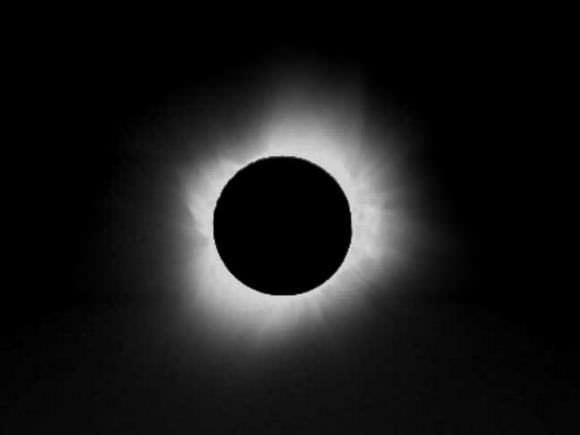
In the second paper, author Jay Pasachoff, who splits his time between Caltech and Williams College, in Massachusetts, reviewed a wealth of knowledge gleaned from solar eclipses.
“Observations of the Sun during total eclipses have led to major discoveries, such as the existence of helium (from its spectrum), the high temperature of the corona (though the reason for the high temperature remains controversial), and the role of magnetic fields in injecting energy into—and trapping ionized gases within—stellar atmospheres,” he writes.
Pasachoff notes that there’s no real end in sight for the usefulness of solar eclipses: “The Moon is receding from the Sun sufficiently slowly that our descendants on Earth will be able to see total eclipses for over 600 million years.”
But he predicts an eventual transition from ground-based to space solar telescopes, especially for getting at tantalizing solar mysteries like the nature of coronal heating.
“At present the paired science and beauty of solar eclipses remain uniquely available to scientists and others in the path of totality.”
Source: Nature
Astronomers Announce First Newborn Stars at Milky Way’s Core
[/caption]
Astronomers have found the first evidence of newborn stars at the center of the Milky Way, a region once thought to be inhospitable to the formation of new stars.
Solange Ramirez, the principal investigator of the research program at NASA’s Exoplanet Science Institute at Caltech, announced three objects during a press conference today as part of the 214th meeting of the American Astronomical Society meeting in Pasadena.
“These baby stars … are stars that have just ignited their core, and are just starting to produce light,” she said. “It is a very early phase.”
The discovery was made using the infrared vision of NASA’s Spitzer Space Telescope.
The heart of our spiral galaxy is cluttered with stars, dust, and gas, and at its very center, a supermassive black hole. Conditions there are harsh, with fierce stellar winds, powerful shock waves, and other factors that make it difficult for stars to form. Astronomers have known that stars can form in this chaotic place, but they’re baffled as to how this occurs. Confounding the problem is all the dust standing between us and center of our galaxy. Until now, nobody had
been able to definitively locate any baby stars.
“These stars are like needles in a haystack,” Ramirez said. “There’s no way to find them using optical light, because dust gets in the way. We needed Spitzer’s infrared instruments to cut through the dust and narrow in on the objects.”
Ramirez and her colleagues plan to look for additional baby stars in the future, and ultimately to piece together what types of conditions allow stars to form in such an inhospitable environment as our galaxy’s core.
“By studying individual stars in the galactic center, we can better understand how stars are formed in different interstellar environments,” said Deokkeun An, also of Caltech, who is lead author of a paper submitted for publication in the Astrophysical Journal.
“The Milky Way galaxy is just one of more than hundreds of billions of galaxies in the visible universe. However, our galaxy is so special because we can take a closer look at its individual stellar components.”
The core of the Milky Way is a mysterious place about 600 light-years across. While this is just a fraction of the size of entire the Milky Way, which is about 100,000 light-years across, the core is stuffed with 10 percent of all the gas in the galaxy — and loads of stars.
Before now, there were only a few clues that stars can form in the galaxy’s core. Astronomers had found clusters of massive adolescent stars, in addition to clouds of charged gas — a sign that new stars are beginning to ignite and ionize surrounding gas. Past attempts had been unsuccessful in finding newborn stars, or as astronomers call them, young stellar objects.
The astronomers looked at their candidate stars with Spitzer’s spectrograph — an instrument that breaks light apart to reveal its rainbow-like array of infrared colors. Molecules around stars leave imprints in their light, which the spectrograph can detect.
The results revealed three stars with clear signs of youth, for example certain warm, dense gases. These youthful features are found in other places in the galaxy where stars are being formed.
“It is amazing to me that we have found these stars,” said Ramirez. “The galactic center is a very interesting place. It has young stars, old stars, black holes, everything. We started mining a catalog of about one million sources and managed to find three young stars — stars that will help reveal the secrets at the core of the Milky Way.”
The young stellar objects are all less than about one million years old. They are embedded in cocoons of gas and dust, which will eventually flatten to disks that, according to theory, later lump together to form planets.
Source: AAS teleconference and press release (meeting teleconferences available via UStream)
IYA Live Telescope – Kaguya Impact: 18:30 UT / THE MOON
The Japanese lunar orbiter Kaguya will end its two-year mission with a controlled impact on the Moon’s surface on June 10th at 18:30 Universal Time. The impact location is near the southeast limb at 80ºE, 63ºS. If you live in Asia and Australia, you may have the opportunity to observe the impact event… And if you don’t? Then watch on our IYA Live Telescope! We’re focused on the Moon right now and keeping our fingers crossed the clouds stay away….
Thanks for stopping by! We opened up all the extra room we had on our server for the day to accomodate as many people as possible.
Well, we tried our best – and here’s the results.
Did we catch it? Doesn’t look that way… But neither did telescopes 5 times larger than what we’re using. The point is, we tried! One of our friendly photographers was also on the job, so once he’s reviewed his footage for the night, perhaps he managed to catch a flash. If so, we’ll share!
In the meantime, thank you so much for tuning in and we’ll keep those cameras rollin’!
First Extra-Galactic Planet May Have Been Detected
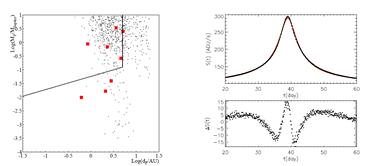
[/caption]
Using a technique called Pixel-lensing, a group of astronomers in Italy may have detected a planet orbiting another star. But this planet is unique among the 300-plus exoplanets discovered so far, as it and its parent star are in another galaxy. The Andromeda Galaxy, to be exact. Technically, the star in M31 was found to have a companion about 6 times the mass of Jupiter, so it could be either a brown dwarf or a planet. But either way, this is a remarkable feat, to find an object of that size in another galaxy.
Pixel-lensing, or gravitational microlensing was developed to look for MAssive Compact Halo Objects MACHOs in the galactic halo of the Milky Way. Because light rays are bent when they pass close to a massive object, the gravity of a nearby star focuses the light from a distant star towards Earth. This method is sensitive to finding planets in our own galaxy, ranging is sizes from Jupiter-like planets to Earth-sized ones. And recently, astronomers used gravitational microlensing to be able to see about a dozen or so stars in M31, an extraordinary accomplishment in itself.
The advantage of microlensing is that it works best for more distant objects, therefore in theory it would seem to be ideal for planet hunting in other galaxies. So, the researchers from the National Institute of Nuclear Physics in Italy, led by Gabriele Ingrosso decided to see if this method would work to detect planets orbiting the stars seen in Andromeda. They used a Monte Carlo approach, where they selected the physical parameters of the binary lens system –a star hosting a planet– and calculated the pixel-lensing light curve, taking into account the finite source effects. The team thought they should be able to detect a planet with about 2 Jupiter masses.
The light from one of the stars they studied in Andromeda showed a distinct variability, most likely from a companion, which could be an orbiting planet based on the object’s mass.
One disadvantage to microlensing is that exposures are available for a few days at most, so the team is hoping for another chance to follow up on their discovery.
The team notes in their paper that perhaps an extrasolar planet in M31 might have already been detected since an anomaly in a pixel-lensing light curve was previously reported by another research team in 2004, who claimed that a possible binary system in M31 was responsible for an observed anomaly in an observed light curve.
Source: arXiv, Technology Review Blog
Kaguya Will Impact the Moon on June 10
[/caption]
The Japanese lunar orbiter Kaguya will end its two-year mission with a controlled impact on the Moon’s surface on June 10th at 18:30 Universal Time. The impact location is near the southeast limb at 80ºE, 63ºS. If you live in Asia and Australia, you may have the opportunity to observe the impact event, and the Japanese Space Agency –JAXA – wants to hear from you if you plan on watching for the impact. The event may be visible with a bright flash or plume. JAXA is making available precise information on the projected time and location of the event. If you are interested in observing the impact, contact JAXA at [email protected] and provide your name, location, and planned observation method.
For more information about the event, see this article on Lunar Photo of the Day.
Here’s JAXA’s page on the mission.
One of the visual highlights of the Kaguya mission was a high definition “Earthrise” movie:

